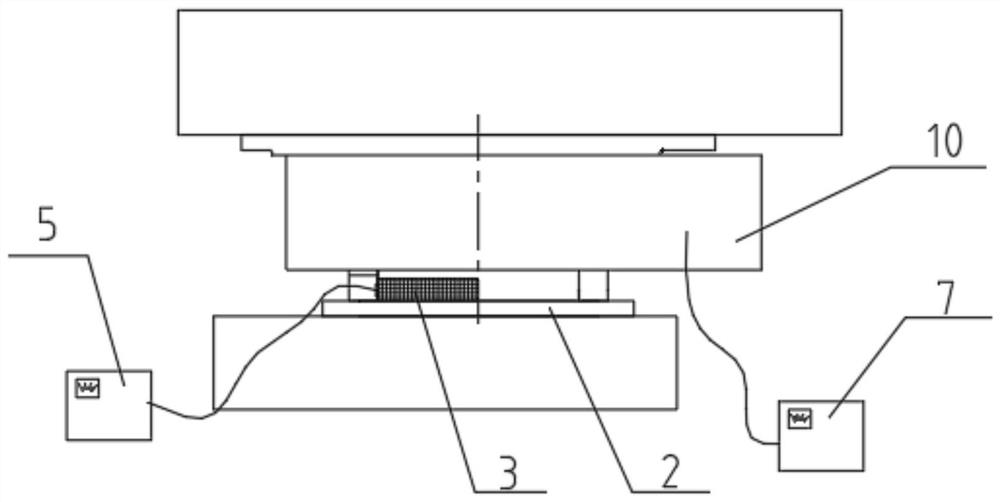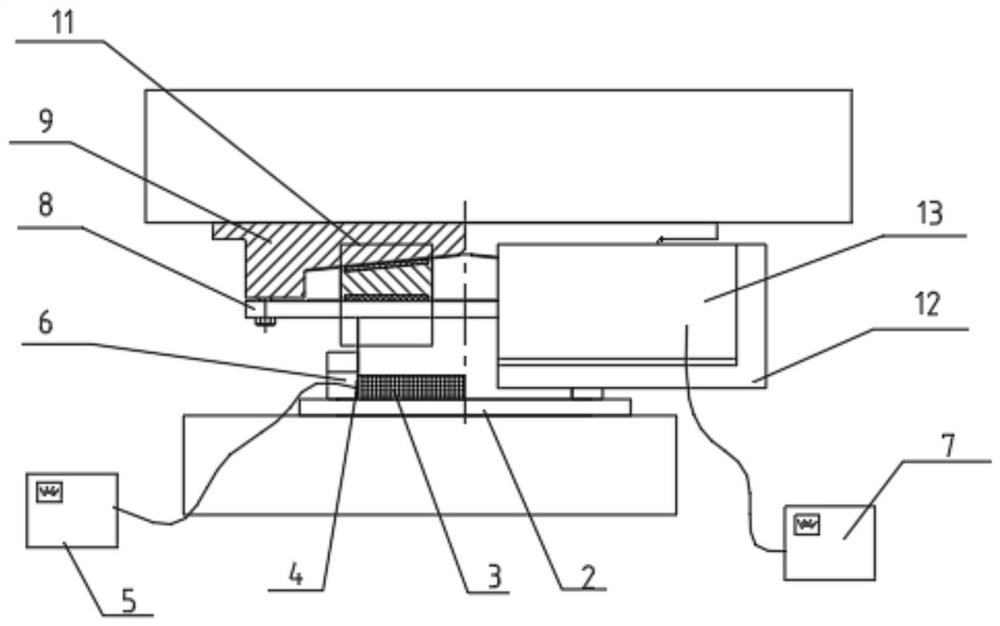Novel calibration method for bridge support device in operation period
A calibration method and bridge bearing technology, applied in bridges, bridge parts, measuring devices, etc., can solve the problem that the service life of the intelligent monitoring bearing is not as good as that of the bridge bearing body due to the sensing device, so as to achieve easy modular design, guarantee Accuracy and reliability, the effect of easy removal and installation of the sensing device
- Summary
- Abstract
- Description
- Claims
- Application Information
AI Technical Summary
Problems solved by technology
Method used
Image
Examples
Embodiment 1
[0034] like figure 1 As shown, a new calibration method for bridge support devices during the operation period includes the following steps:
[0035] S1: Obtain the relationship between the standard value of the lateral loading force of the support device and the actual vertical bearing capacity;
[0036] S2: Using the relational expression in S1 above, by connecting the power drive device 10 to the support device, the controller 7 is connected to the power drive device 10, and the controller 7 controls the power drive device 10 to repeatedly control the support device as required. Apply different values of lateral loading force, such as C1, C2, C3, that is, apply horizontal force to the two adjustment blocks 14 of the height adjustment mechanism. The adjustment block 14 is wedge-shaped, similar to a triangle shape, and the height adjustment mechanism can completely feed back the vertical force to the The bearing body 1, according to the decomposition of the force, decompos...
Embodiment 2
[0039]The height adjustment mechanism is installed on the support, and the height adjustment mechanism moves away or approaches each other through the two adjustment blocks 14 to make the height adjustment mechanism rise or fall, and the power drive device 10 is connected to the two adjustment blocks, and can be adjusted when lateral loading force is applied. The corresponding relationship between the height value and the relative displacement value of the two adjusting blocks 14, and then the corresponding relationship between the relative displacement value of the two adjusting blocks 14 and the lateral loading force value is obtained, which is equivalent to replacing the relative displacement value of the adjusting block, thereby obtaining the height adjustment mechanism. The relationship between the appreciation and the lateral loading force value, such as when applying different lateral loading forces C1, C2, and C3 to the two adjusting blocks 14, measure and record the rel...
Embodiment 3
[0041] like Figure 2-4 As shown, a support device includes a support body 1. In this embodiment, a height adjustment mechanism is provided on the top surface of the support body 1. The height adjustment mechanism is installed on the bottom surface of the beam body, and the support body 1 is placed on a pelvic cavity. In the bottom basin 2 of the structure, the bottom basin 2 is installed on a bridge pier or a pier column, and a force-measuring carrier 3 is provided on the bottom surface of the support body 1. The force-measuring carrier 3 is closely attached to the inner wall of the pelvic cavity. A sensing device 4 is installed, and a mounting hole 6 is provided on the side of the bottom basin 2 to facilitate the installation of the sensing device 4 to achieve the purpose of easy disassembly and installation. The operator can directly touch whether the sensing device 4 is installed in place, and the sensing device The signal line of 4 is connected to the external data acquis...
PUM
 Login to View More
Login to View More Abstract
Description
Claims
Application Information
 Login to View More
Login to View More - R&D
- Intellectual Property
- Life Sciences
- Materials
- Tech Scout
- Unparalleled Data Quality
- Higher Quality Content
- 60% Fewer Hallucinations
Browse by: Latest US Patents, China's latest patents, Technical Efficacy Thesaurus, Application Domain, Technology Topic, Popular Technical Reports.
© 2025 PatSnap. All rights reserved.Legal|Privacy policy|Modern Slavery Act Transparency Statement|Sitemap|About US| Contact US: help@patsnap.com



